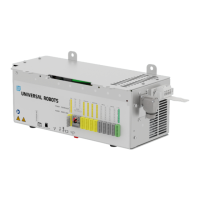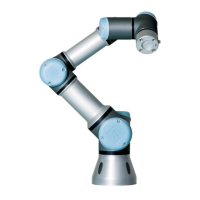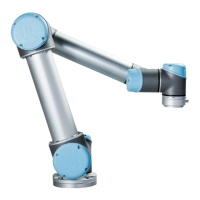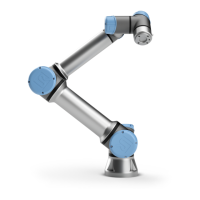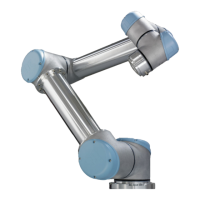Inner
workspace
limit
The singularity occurs because the movements are directly above or directly below the
robot base. This causes many positions/orientations to be unreachable.
To avoid: Program the robot task in such a way that it is not necessary to work in or close to
the central cylinder. You can also consider mounting the robot base on a horizontal surface
to rotate the central cylinder from a vertical to horizontal orientation, potentially moving it
away from the critical areas of the task.
Wrist
alignment
This singularity occurs because wrist joint 2 rotates on the same plane as the shoulder,
elbow and wrist joint 1. This limits the range of movement of the robot arm, regardless of
workspace.
To avoid:Layout the robot task in such a way that it is not necessary to align the robot wrist
joints in this manner. You can also offset the direction of the tool, so that the tool can point
horizontally without the problematic wrist alignment.
6.4.2. Fixed and Movable Installation
Description Whether the robot arm is fixed (mounted to a stand, wall or floor) or in a movable
installation (linear axis, push cart, or mobile robot base), it must be installed securely to
ensure stability through all motions.
The design of the mounting must ensure stability when there are movements of:
•
the robot arm
•
the robot base
•
both robot arm and robot base
User Manual 46 UR30
6.Assembly and Mounting
Copyright © 2009–2024 by UniversalRobotsA/S. All rights reserved.
